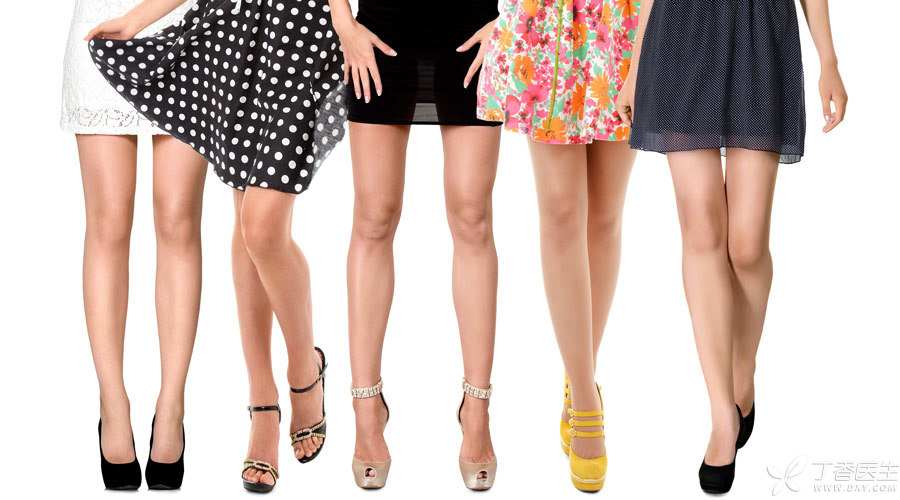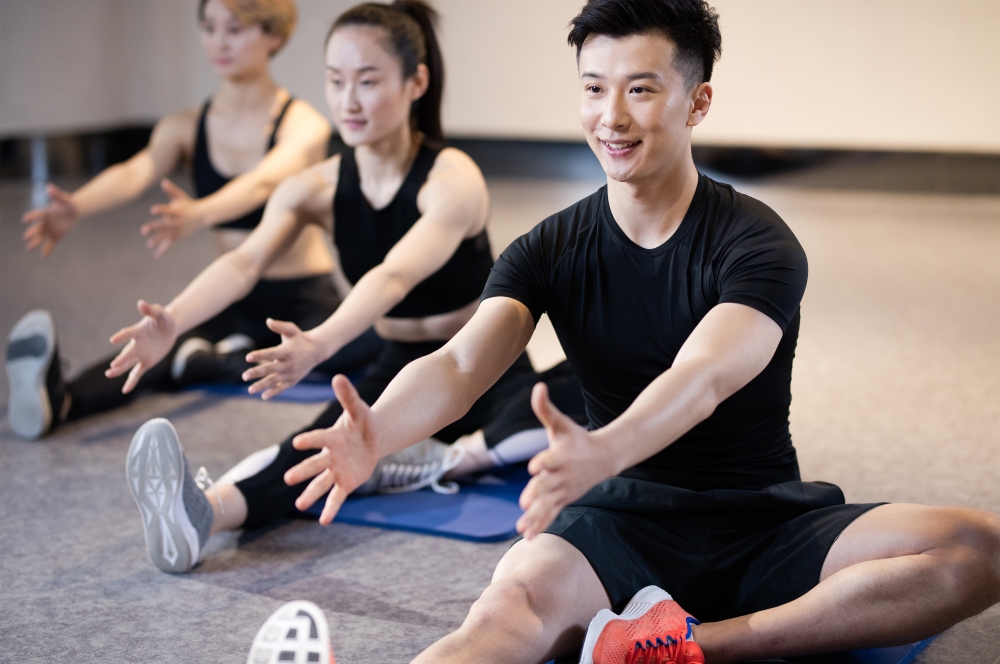
How did my calf bulge out? Bulge out a big piece! How ugly!
Galloping in the gym for many years, I often hear girls say this sentence. Every time I see the problem of [thin legs], I have a headache. Today, sort out the common problems.
Judge the type of calf thickness
First, let’s judge which type of calf is thick, so as to give a solution to the disease. The judgment actions are as follows: first tighten the lower leg, then use the index finger and thumb to pinch the skin of the leg;
- [Muscle Type]: If your muscle lines are obvious and sebum is thin, it is a little difficult to reduce the circumference of your calves. This is [Muscle Type] calf thickness. Of course, most girls are not like this. If your body fat is very low and your calves are extremely thick, contact me if you are involved. You are very talented in bodybuilding and I will be your coach!
-
[Fat type]: If your muscle lines are not obvious, it is [a lump] of instant vision after tightening. The key is to pinch up a layer of thick sebum, but there is still room to reduce the circumference. However, most girls belong to this [fat type] with thick calves and need to reduce fat first.
-
[Muscle Type + Fat Type]: If your muscle lines are obvious and the sebum kneaded is thick, refer to [Fat Type], you need to reduce fat first.
The important point is that fat is consumed by the whole body. If you want to reduce fat, you will reduce the whole body. At the same time, you will be thin in your lower legs. Don’t just ask how thin your lower legs are. As long as you exercise steadily and control your diet well, there will be good results. However, it takes time. Please be sure to stick to it.
Will your calf be thick after running?
Many girls worry about running with thick calves, which is the biggest misunderstanding. If you find that your calves are hard and thick after running, don’t be afraid, this is only temporary muscle congestion. Just stick to relaxing and stretching after exercise.
You should know that the lower leg is extremely insensitive to strength training, and you can exercise boldly with confidence. Besides, you aim at reducing fat and reduce nutrition intake during the exercise. How can you still want muscle fibers to grow? It is difficult to grow muscles without nutrition, so it is good to repair them.
Key points of thin legs 1: Don’t be afraid of temporary muscle congestion caused by running and strength training.
Skinny legs? Unrealistic
Some people may suggest that if the daily use of the lower leg is minimized, the lower leg will be thin, because the muscle function will deteriorate and atrophy.
That’s right, this is completely feasible in theory, but the actual operation is basically zero, unless you are in a wheelchair or walking handstand every day. People have a normal working life. No matter how you walk, how to adjust your walking style, how to use your thighs to exert power, your calves are directly bearing the weight, which is inevitable.
If you really don’t use your legs, you will have the possibility of hoarding fat due to lack of activity and energy consumption, and your calves will only get thicker and thicker.
Key points of thin legs 2: cannot but move; You can learn to adjust your walking posture, but it is of little significance.

Where to practice and where to lose weight? No
Fat is consumed by the whole body. This is a commonplace problem that has been said thousands of times. It is not to say that you can consume any piece of fat in a targeted way. It is impossible. If you want to reduce fat locally, you can only go to the local [liposuction operation].
It is only the wishful thinking of the public to practice whichever is thinner. It is possible to practice whichever is big, because muscles in some parts can selectively hypertrophy and directional congestion.
Lift heel exercises are of little use for thin calves and have little effect on fat consumption, but it is true that they can strengthen the main muscles of your calves-gastrocnemius and soleus.
Tip 3: Don’t do a lot of lift heel exercises all day.
How long can I lose my legs?
Whether your aim is to thin your whole body or a certain part (such as your lower leg), you need a systematic exercise, a good diet control and a long period of persistence.
Generally speaking, 12 weeks is a big cycle, and those who are heavier should even be prepared for a protracted war of half a year to one year. If you are impetuous after only a few weeks of exercise, please be sure to stick to it, be patient and continue to refuel.
In training, We should do more exercises for large muscle groups and the whole body, and of course, we should also practice small muscle groups appropriately. It is often seen that many people plan to train 4-5 days a week, with abdominal exercises and aerobic exercises every day, which is obviously wrong. Large muscle groups and whole body exercises are the main force for consuming calories and improving metabolism. Never ignore them.
Key points of thin legs 4: First, reduce fat, control diet, do more aerobic work, and cooperate with strength training.
Body advice for female friends
-
Don’t cross your legs or try to cross your legs as little as possible. If you are not feeling uncomfortable, you may already have posture problems.
-
Try not to wear shoes with too high heels. If you need to stand for a long time or wear high heels at work, you must remember to massage and stretch your calves after work.
-
You can find a small ball, such as golf ball and tennis ball, put it on the sole of your foot, step on it, massage and relax the plantar fascia, and then massage and stretch the back of your lower leg.
-
Do some plantar muscle strength exercises to strengthen the muscles of the lower foot. For example, throw a towel on the ground, grab it with your toes and repeat it several times. If necessary, get a foam shaft and massage the whole body (especially the waist, back and lower limbs) to relax.
-
When walking, consciously control your posture, hold your head high, and try not to walk loosely and listlessly.
-
Try not to wear slippers with high heels, the chance of sprain is too high.
-
When carrying a satchel or bag, alternate the two sides, don’t always carry one side.
-
If you already have posture problems such as chest hunchback, high and low shoulders, pelvic tilt forward, joint hyperextension, etc. Before systematic fitness training, please be sure to find a professional coach to correct the bad posture first. Otherwise, the bad posture will be further strengthened in the following training. Serious cases will lead to injuries. This is a vicious circle.
